Timothy Ferriss's Blog, page 83
September 25, 2016
Dom D’Agostino on Disease Prevention, Cancer, and Living Longer
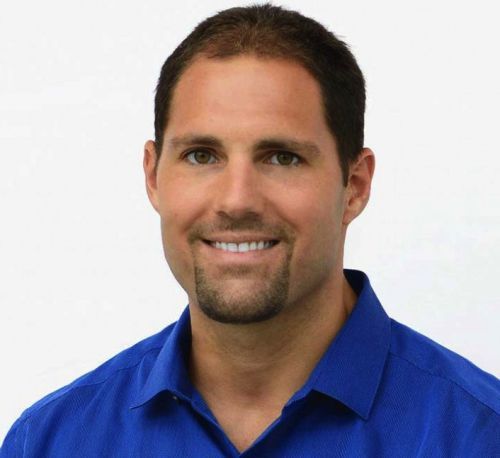
“The pursuit of size and strength really contradicts what we want to go after for longevity.” – Dominic D’Agostino
Dr. Dominic “Dom” D’Agostino (@DominicDAgosti2) is one of my most popular guests, and I’m happy to have him rejoin the show for the third time. (You can listen to Dom’s first appearance here, and his second appearance here).
Dom is an assistant professor in the Department of Molecular Pharmacology and Physiology at the University of South Florida Morsani College of Medicine, and a senior research scientist at the Institute for Human and Machine Cognition (IHMC) — which is mentioned in the current issue of Outside Magazine (on which there’s a clown who looks a lot like me).
Much of Dom’s work is related to metabolic therapies and nutritional strategies for peak performance and resilience in extreme environments. Dom’s research is supported by the Office of Naval Research (ONR), Department of Defense (DoD), and other private organizations and foundations.
In this episode, Dom focuses on disease prevention, cancer, and more mastery of the ketogenic diet. Please enjoy this tutorial and masterclass with Dominic D’Agostino.
Listen to it on iTunes.
Stream by clicking here.
Download as an MP3 by right-clicking here and choosing “save as.”
Want to hear my first interview with Dom D’Agostino? — Listen to our in-depth conversation here. In this episode, we discuss fasting, heavy deadlifts, and the end of cancer (stream below or right-click here to download):
This podcast is brought to you by Vimeo Business. Vimeo Business has all of the prior benefits of Vimeo Pro, including VIP support. Whether you make videos for a living, run your own company, or simply want to amp up your video marketing, Vimeo Business is here to help. It has more than 280 million creators and viewers worldwide and makes it easier to share your videos with a global audience and connect with professional video makers to bring your stories to life.
Vimeo Business allows you to upload up to five terabytes and store your videos in one secure place, add up to 10 team members to your account for easy collaboration, and gather feedback with seamless review tools. You can even add clickable calls to action and capture email addresses directly in the player, which can help you generate leads and drive conversion for whatever you’re trying to optimize — such as a newsletter or a sales page. Check out vimeo.com/tim10 to save 10 percent on Vimeo Business.
This podcast is also brought to you by Wealthfront. Wealthfront is a massively disruptive (in a good way) set-it-and-forget-it investing service led by technologists from places like Apple. It has exploded in popularity in the last two years and now has more than $2.5B under management. Why? Because you can get services previously limited to the ultra-wealthy and only pay pennies on the dollar for them, and it’s all through smarter software instead of retail locations and bloated sales teams.
Check out wealthfront.com/tim, take their risk assessment quiz, which only takes 2-5 minutes, and they’ll show you — for free — exactly the portfolio they’d put you in. If you want to just take their advice and do it yourself, you can. Well worth a few minutes to explore: wealthfront.com/tim.
QUESTION(S) OF THE DAY: What was your favorite quote or lesson from this episode? Please let me know in the comments.
Scroll below for links and show notes…
Selected Links from the Episode
Connect with Dom D’Agostino:
KetoNutrition.org | Facebook | Twitter | University of South Florida
Dom D’Agostino on Fasting, Ketosis, and the End of Cancer (his first appearance on this show)
Dom D’Agostino — The Power of the Ketogenic Diet (his second appearance on this show)
How the Ketogenic Diet Weakens Cancer Cells by Dr. David Jockers, The Truth About Cancer
Fighting Cancer with Fats: Barrow Researcher Explores Innovative Cancer Treatment, Barrow Neurological Institute
Neurological Disorders & the Ketogenic Diet — Dr. Jong Rho, The Keto Advocate (video)
The Ketogenic Diet Is an Effective Adjuvant to Radiation Therapy for the Treatment of Malignant Glioma, PLOS
The Glucose Ketone Index Calculator by Joshua J Meidenbauer, Purna Mukherjee, and Thomas N. Seyfried, Nutrition & Metabolism
Dominic D’Agostino, Ph.D. on Modified Atkins Diet, Keto-Adaptation, Ketosis & More interview with Dr. Rhonda Patrick at FoundMyFitness
Exogenous ketones
Dom’s favorite BCAA (branched chain amino acid) product: Xtend
The Anabolic Trigger! Learn More About Leucine by Layne Norton, Ph.D, Bodybuilding.com
5-HTP (supplements to support appetite suppression)
Quest Nutrition MCT (Medium Chain Triglyceride) Powder Oil
The Fasting Cure by Upton Sinclair (PDF)
Barrow Neurological Institute’s Scheck Laboratory (there’s a Donate button in the top-right corner if you’re so inclined)
The Warburg effect
Benign tumors
Targeting Insulin Inhibition as a Metabolic Therapy in Advanced Cancer by Eugene J. Fine M.D., Richard D. Feinman Ph.D, et al.
Lower-Carb Diet Slows Growth of Aggressive Brain Tumor in Mouse Models by Doug Bennet, UFHealth
The Ketogenic Diet: Uses in Epilepsy and Other Neurologic Illnesses by Kristin W. Barañano, MD, PhD and Adam L. Hartman, MD
Effects of a Ketogenic Diet on the Quality of Life in 16 Patients with Advanced Cancer: A Pilot Trial by Melanie Schmidt, et al.
Hyperbaric oxygen therapy, Mayo Clinic
Targeting Cancer Metabolism with Ketosis and Hyperbaric Oxygen by Angela M. Poff, University of South Florida
Ben Greenfield on the Best Nutrition Supplements, Mahler’s Aggressive Strength Podcast Episode 55
KetoSports Keto8 caprylic acid (C8)
APOE (Apolipoprotein E) and the E4 variant that signifies a genetic risk factor for late-onset sporadic Alzheimer’s disease
Study of the Ketogenic Agent AC-1202 in Mild to Moderate Alzheimer’s Disease: A Randomized, Double-Blind, Placebo-Controlled, Multicenter Trial by Samuel T. Henderson, et al.
Dale Bredesen Discusses the Metabolic Factors Underlying Alzheimer’s Disease, IHMC STEM-Talk Episode 12
Berberine
Metformin
Trials related to Metformin
Andrew Scarborough N=1 Experiment: Using Ketosis to Fight a Brain Tumor, The Quantified Body Episode 44
Are Cheat Meals or Cheat Days Allowed on Keto?, Keto subreddit
Ketogenic Low-Carbohydrate Diets Have No Metabolic Advantage over Nonketogenic Low-Carbohydrate Diets by Carol S. Johnston, et al.
Methylene blue
Metformin in Longevity Study (MILES), Albert Einstein College of Medicine of Yeshiva University
Metformin to Augment Strength Training Effective Response in Seniors (MASTERS Trial), University of Alabama
The Anaerobic Glycolytic System (fast glycolysis)
Dom recommends creatine monohydrate as a supplement to glycolytic training.
Arnold: The Education of a Bodybuilder by Arnold Schwarzenegger
Insulin-like growth factor 1 (IGF-1)
beta-Hydroxybutyric acid
Kegenix
KetoSports KetoCaNa
Forever Green Ketopia
Could This Ketosis-Based Elixir Hold the Key to Weight Loss, World Record Performances, Brain Healing and More?, Ben Greenfield Fitness
Use of 1,3-butanediol acetoacetate in parenteral oral nutrition (Dr. Brunengraber’s ester)
Show Notes
Does the ketogenic diet “beat” chemotherapy for cancer? [06:45]
Dom elaborates on the detoxifying effects of ketosis on precancerous cells in healthy individuals. [15:07]
How does one jump start a daily ketogenic cycle without supplements? [16:25]
How can lean muscle mass be maintained when fasting? [17:56]
What types of cancers are most affected by ketosis? [21:34]
What process is most effective for targeting cancer? [23:25]
The ketogenic diet as a do no harm therapy. [26:14]
Nutritional ketosis and hyperbaric oxygen therapy: how, why, and when? [27:51]
How long would an amateur endurance athlete need to be in ketosis to get the full benefit of being fat adapted for a marathon, and what supplement stack would Dom recommend? [33:47]
Should an APOE4 (Apolipoprotein E) carrier — someone at genetic risk for Alzheimer’s disease — be careful with a ketogenic diet? [36:35]
Are there any downsides to shifting out of ketosis for an occasional cheat meal? [41:06]
What does Dom have to say about the study that found ketogenic diets have no metabolic advantage? [46:19]
If your body doesn’t do well with dairy or nuts, what would be good fat source alternatives on a modified ketogenic diet? [48:58]
Dom talks about Metformin, methylene blue, and other non-food substances meant to increase longevity. [50:24]
Can the ketogenic diet be used while glycolytic training? [58:06]
What is it like for Dom to be an academic who makes serious weight training a big part of his life, and how do these two pursuits complement (or complicate) each other? [1:01:06]
Dom’s thoughts on John Kiefer’s carb backloading. [1:07:26]
Are ketone salt products on the market safe — specifically the DL beta-Hydroxybutyric salts? [1:12:27]
People Mentioned
Adrienne Scheck
Jong Rho
Thomas Seyfried
Rhonda Patrick
George F. Cahill, Jr.
Layne Norton
Eugene Fine
Richard Feinman
Brent Reynolds
Melanie Schmidt
Angela Poff
Ben Greenfield
Samuel Henderson
Dale Bredesen
Andrew Scarborough
David Ludwig
John Kiefer
Dave Asprey
Richard Veech
Henri Brunengraber

September 22, 2016
Peter Diamandis’s 9 Rules For Building A Successful Business
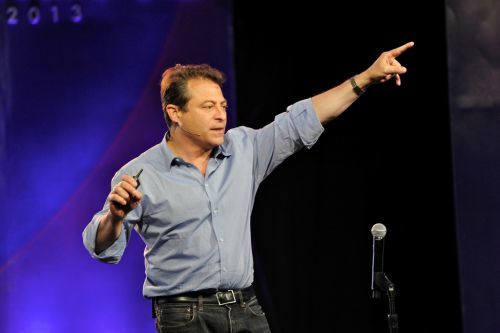
Dr. Peter Diamandis (@PeterDiamandis) has been named one of “The World’s 50 Greatest Leaders” by Fortune magazine. In the field of innovation, Diamandis is Chairman and CEO of the XPRIZE Foundation, best known for its $10 million Ansari XPRIZE for private spaceflight. Today the XPRIZE leads the world in designing and operating large-scale global competitions to solve market failures.
Peter has been a guest on the podcast twice (once with Tony Robbins, and again solo), and in this guest post, he shares information he’s never discussed before. Specifically, Diamandis looks back at his XPRIZE experience and the strategic decisions that allowed the foundation to become a success.
Peter knows how to think and play big, and he can show you how to do the same. Enjoy!
Enter Peter
The XPRIZE – which launched the private spaceflight industry – was an “overnight success” after 10 years of hard work.
During those 10 years, I recorded a number of “go-to” lessons that I learned and used over and over to help me succeed.
In all, I came up with a list of 28 of those lessons, and they became known as “Peter’s Laws.”
But 9 of them are my favorite, and in this post, I’ll outline them and detail the key takeaways. If you want to learn about all of the lessons, they are highlighted in the book, How To Make A Spaceship, written by Julian Guthrie, with a foreword by Richard Branson and an afterword by Steven Hawking.
One thing is clear from my XPRIZE story: attitude is the ball game. Mindset matters. It’s everything. It might be cliché, but whether you think you can or you can’t—well, you’re right.
Your mindset is more important than anything. It’s even more important than technology or income. I hope that these will clarify your vision and be useful to you.
Rule #1: When given a choice…take both!
Society teaches us that when you’re given a choice, you have to choose one. Why? Why do you have to choose?
But you should be asking, “Why choose?”
All throughout graduate school, I was told, “Go to school or start a company.”
For me, the answer was both. In fact, I started three companies while in grad school. Steve Jobs did the same with Apple and Pixar. Elon Musk is running Tesla and SpaceX; he’s also chairman of SolarCity. And Branson — well, Branson’s Virgin Group has started over 300 Virgin companies and built eight different billion-dollar companies in eight different industries.
So, I challenge you: When someone says choose vanilla or chocolate, say, “I’ll have them both, please.” Multiple projects lead to multiple successes.
Rule #2: “No” simply means begin again at one level higher.
When someone says “no” to your request, often it’s because that person isn’t empowered to say “yes,” and the only person who can say “yes” is the person at the top of the food chain.
This is one of the reasons it took me 10 years to get Zero Gravity Corporation, my commercial parabolic flight company, started. I had to battle an entire FAA bureaucracy that insisted it was not possible to operate large-scale zero gravity flight operations for the public, despite the fact that NASA had been doing it for 40 years.
Ultimately, because there was some risk, none of the mid-level bureaucrats had the power to say “yes.” At last, my request made it all the way up to the FAA Administrator, an amazing woman who told me, “Of course, you should be able to do this – let’s figure out how.”
Rule #3: Patience is a virtue, but persistence is a blessing.
If I had to name my superpower, it would be persistence – not giving up, even when everyone tells me it isn’t going to work.
My most important successes (companies like the Zero Gravity Corporation, XPRIZE, and Planetary Resources) have taken me 10 years or more to implement.
What good is patience without persistence? Doing anything big and bold in life is hard work, and learning to persist is fundamental to your success.
Another name for this superpower is ‘grit.’ This is your will to keep pushing, iterating, and taking the next step in the face of hardship.
Remember that failure is only inevitable when you give up.
Rule #4: The squeaky wheel gets replaced.
In this age of abundance, where you can access whatever you need, whenever you need it… don’t settle. Demand the best.
It used to be that the supply of talent, technology or treasure (i.e. money) was scarce. That is no longer the case.
If someone or something in your organization is a squeaky wheel, rather than tolerating or greasing them, you’re probably better off finding someone who fits your team’s ethos, vision and mindset.
Would you rather spend your time with your best performers helping them grow and get even better, or spend time with your squeakiest wheels dealing with their issues?
Your time as a leader is limited – use it to build an incredible team.
Rule #5: The best way to predict the future is to create it yourself.
The future is not written. It’s not preordained. It unfolds as a result of our actions… the choices we make and the risks we take.
This is actually the model for my life. I wanted to predict a future in which there would be private commercial spaceflight, so I launched the $10 million XPRIZE. Private spaceflight simply didn’t exist.
I’ve predicted a future in which we’ll have asteroid mining, so I cofounded Planetary Resources. I want to live a long and healthy life, so I cofounded Human Longevity, Inc.
Ultimately, isn’t this exactly what it means to be an entrepreneur? An entrepreneur clearly envisions the future and becomes so enamored with it that they turn their thoughts into reality and will the future they desire into existence.
Rule #6: An expert opinion is not the final word.
When I announced the XPRIZE, many of the “experts” in the aerospace industry explained to me why I was naive and wouldn’t succeed.
In 1714, when the Longitude Board (composed of the world’s greatest Royal Astronomers) saw a working clock built by watchmaker John Harrison meet all of the requirements of the Longitude Prize, they refused to pay him the purse because they were absolutely sure it would be won by an astronomer.
In a rather perverse twist, an expert is massively disincentivized to promote someone else’s radical and disruptive solution. This is because new inventions that result in wholesale change cause a shift where “experts” can be transformed into “has-beens.”
Some experts are therefore inspired and committed to keeping things exactly the way they are. That’s why it’s important to always think in terms of what can be done.
Rule #7: Most breakthroughs begin as a crazy idea.
I first heard a variation of this concept from Burt Rutan, the man who designed and built SpaceShipOne, the brilliant launch vehicle that won the $10M Ansari XPRIZE.
As Rutan explained it to me – as described in How to Make a Spaceship – a small incremental improvement is not a breakthrough.
For example, a computer that is 50% faster than last year’s model is predictable and expected. But going from computers based on vacuum tubes to computation based on silicon wafers is a breakthrough.
So my question to you is: Where in your organization do you allow for crazy ideas to be tried and tested? How are you creating space for yourself to imagine and experiment with crazy ideas?
If you don’t try this — if you are risk adverse and stick with safe, proven steps — then you’re ultimately stuck with incremental progress, not breakthroughs.
One more thing: Burt Rutan also likes to say he finds breakthroughs where others see nonsense. It’s no surprise that he has six first-of-a-kind planes in the Smithsonian Air and Space Museum.
Rule #8. If it were easy, it would have been done already.
Doing anything big and bold is hard work.
Going after an easy, quick win either means you’re not trying to change the world or you’ve got a false grip on reality.
With five billion connected people with access to Google and Amazon Web Services, you can expect that the easy stuff has been tried and conquered.
If you’re working on something you truly care about solving, it’s hard to do and you don’t see anyone else trying, that’s a pretty good indication that you’re on a path to solve something significant and worth pursuing.
Don’t fear hard work. Celebrate it as a measure of the size of the dent you are making in the universe!
Rule #9: The world’s most precious resource is a passionate mind.
I’m often struck by the ability of a single individual to change the world.
Think Thomas Edison, Henry Ford, Elon Musk, Larry Page, Richard Branson, Martin Luther King and Mahatma Gandhi, to name a few. They each started with no money or technological advantage, just passion and perseverance.
Ultimately, three things make anything possible: People, technology, and money. If you have the right people and enough money, you can create the technology — that’s called innovation. If you have the right people and the right technology, you can attract the funding — that’s called venture capital.
But money and technology alone, without the persistent and passionate human mind driving you forward, will never change the world.
Doing something big and bold — taking risks that benefit you and can benefit society — means overcoming extraordinary hurdles.
It means attacking a challenge with all of your energy and focus, and many times remaining motivated for a decade or more.
Such passion and commitment can only come when you are emotionally committed with all of your heart and soul. And this level of commitment only materializes when your goal is powered by intense emotional energy.
There is nothing more powerful in your life than a cause you would willingly die for, whether it is your family or a belief you hold fundamental to your existence.
Following this passion is how you create a world worth living, a life that wakes you up in the morning and gets you excited.
I was lucky to find one of my abiding passions in childhood. I watched the landing of Apollo 11 in July 1969 and knew I had to get to space and get my friends there too. Listen to your heart, and don’t let those dreams die.
For more on these lessons and others, check out How To Make A Spaceship.

September 21, 2016
Jocko Willink on Discipline, Leadership, and Overcoming Doubt
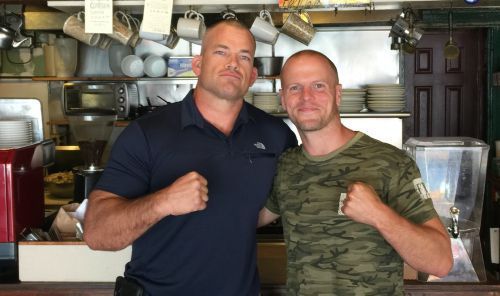
“Don’t count on motivation; count on discipline.” – Jocko Willink
Jocko Willink (@jockowillink) is one of the scariest human beings imaginable. Jocko did his first interview with me (find it here), and it took the Internet by storm. Now he joins us for round two to answer the questions you’ve been asking.
Jocko is a lean 230 pounds. He is a Brazilian jiu-jitsu expert who used to tap out 20 Navy SEALs per workout. He is a legend in the Special Operations world. His eyes look through you more than at you.
Jocko spent 20 years in the US Navy and commanded SEAL Team 3’s task unit Bruiser, the most highly decorated special operations unit in the Iraq War. Upon returning to the US, Jocko served as the officer in charge of training for all West Coast SEAL teams, designing and implementing some of the most challenging and realistic — and perhaps psychotic — combat training in the world (his words, not mine).
After retiring from the Navy, he co-founded Echelon Front, a leadership and management consulting company and authored the number one New York Times bestseller Extreme Ownership: How US Navy SEALs Lead and Win.
I hope you enjoy this episode as much as I did!
Listen to it on iTunes.
Stream by clicking here.
Download as an MP3 by right-clicking here and choosing “save as.”
Want to hear another podcast episode with Jocko? — Listen to our first interview together. Jocko might be the scariest Navy SEAL alive, and this episode shares how he earned that reputation. Learn what he taught me (stream below or right-click here to download):
This podcast is brought to you by Headspace, the world’s most popular meditation app (with more than 4,000,000 users). It’s used in more than 150 countries, and many of my closest friends swear by it. Try Headspace’s free Take10 program — 10 minutes of guided meditation a day for 10 days. It’s like a warm bath for your mind. Meditation doesn’t need to be complicated or expensive, and it’s had a huge impact on my life. Try Headspace for free for a few days and see what I mean.
This podcast is also brought to you by Wealthfront. Wealthfront is a massively disruptive (in a good way) set-it-and-forget-it investing service led by technologists from places like Apple. It has exploded in popularity in the last two years and now has more than $2.5B under management. Why? Because you can get services previously limited to the ultra-wealthy and only pay pennies on the dollar for them, and it’s all through smarter software instead of retail locations and bloated sales teams.
Check out wealthfront.com/tim, take their risk assessment quiz, which only takes 2-5 minutes, and they’ll show you — for free — exactly the portfolio they’d put you in. If you want to just take their advice and do it yourself, you can. Well worth a few minutes to explore: wealthfront.com/tim.
QUESTION(S) OF THE DAY: What was your favorite quote or lesson from this episode? Please let me know in the comments.
Scroll below for links and show notes…
Selected Links from the Episode
Connect with Jocko and his organizations on Twitter:
@Xtremeownership | @jockowillink | @echelonfront
Connect with Jocko and his organizations on Facebook:
Extreme Ownership | Jocko Willink | Echelon Front
The Scariest Navy SEAL Imaginable…And What He Taught Me (Jocko’s first appearance on the show)
Extreme Ownership: How US Navy SEALs Lead and Win by Jocko Willink and Leif Babin
Learn more about Victory MMA and Fitness, Jocko Willink’s gym in San Diego
Seeking solutions in business or leadership? Check out Echelon Front
About Face: The Odyssey of an American Warrior by Colonel David H. Hackworth and Julie Sherman
With the Old Breed: At Peleliu and Okinawa by E.B. Sledge
Beyond Band of Brothers: The War Memoirs of Major Dick Winters by Dick Winters and Cole C. Kingseed
I Remember The Last War by Bob Hoffman
Steel My Soldiers’ Hearts: The Hopeless to Hardcore Transformation of U.S. Army, 4th Battalion, 39th Infantry, Vietnam by Col. David H. Hackworth
Platoon Leader: A Memoir of Command in Combat by James R. McDonough
The Killing Zone: My Life in the Vietnam War by Frederick Downs, Jr.
charity: water helps people in developing parts of the world get access to the potable water Jocko talks about.
United States Armed Forces oath of enlistment
The Joe Rogan Experience #729 with Jocko Willink
Nuremberg trials
Extreme Ownership Muster Event
The Second Battle of Ramadi
Brazilian jiu-jitsu
Indirect approach
Show Notes
How does Jocko shut down internal doubt and negative chatter during critical moments? [06:54]
How Jocko’s love of literature influence his leadership skills — and his most recommended books. [12:05]
Jocko’s advice to young men and women who are no longer in the military but are still looking to contribute. [18:41]
Thoughts on “being a pawn of the industrial military complex to serve the economic interests of US corporations?” [22:36]
On the United States’ use of resources. [28:52]
The hardest thing Jocko has ever endured. [33:59]
What advice would Jocko give an active duty member of the military after election day (presumably if their candidate of choice is not elected)? [35:23]
The most effective way to get leaders to stop supporting ineffective practices. [38:05]
How would Jocko’s life of extreme discipline translate to those involved in creative pursuits? [42:13]
After working with and training so many companies, are there any repeating patterns or common weaknesses that business owners seem to need to work on? [46:46]
What is Jocko’s approach for overcoming personal challenges? [51:37]
How can you stay motivated when every day is a struggle? [55:05]
How does Jocko feel about killing (sometimes innocent) people at war? How does he feel about war in general? [1:00:40]
The biggest lessons from jiu-jitsu that transcend fighting and can be applied to leadership. [1:10:23]
People Mentioned
Hillary Clinton
Donald Trump
Barack Obama
Richard M. Nixon
John F. Kennedy
Ronald Reagan
Joe Rogan
Leif Babin

September 18, 2016
Tony Robbins on How to Resolve Internal Conflict
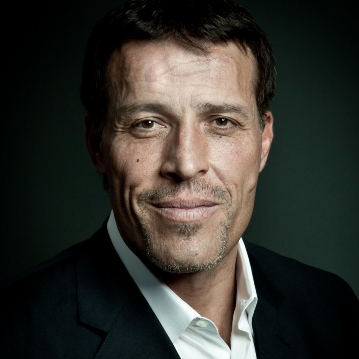
“You can’t be grateful and angry simultaneously.” – Tony Robbins
The last time Tony Robbins (@tonyrobbins) was on the show, so many listeners found one of his exercises so helpful that they suggested I feature it on its own.
This guided meditation from Tony is designed to help you overcome stress in a way that’s backed with quantifiable neuroscience. If you’ve been worrying about unfinished business without resolution, this is a powerful tool to help you resolve the situation.
This is very short and very powerful. Enjoy!
Listen to it on iTunes.
Stream by clicking here.
Download as an MP3 by right-clicking here and choosing “save as.”
Want to hear my most recent podcast with Tony Robbins? — Listen to this episode. In this podcast, you’ll learn about success, fulfillment, and some of the worst advice Tony has ever heard (stream below or right-click here to download):
This episode is brought to you by Exo Protein. These guys are making protein bars using cricket protein powder. Before you look disgusted, I bet they taste better than any protein bar you’ve ever had before! With recipes that were developed by a three-Michelin-star chef, the bars are paleo-friendly, with no gluten, no grains, no soy, no dairy, and they won’t spike your glycemic response. In fact, they’re less processed than any other protein bars you’ll be able to find.
Exo Protein is offering a deep discount to Tim Ferriss Show listeners — if you go to ExoProtein.com/Tim, you can try a sampler pack with all of the most popular flavors for less than $10. This is a startup with limited inventory that sells out all the time,so act fast!
QUESTION(S) OF THE DAY: What was your favorite quote or lesson from this episode? Please let me know in the comments.
Scroll below for links and show notes…
Selected Links from the Episode
Connect with Tony Robbins:
Tony Robbins On Achievement Versus Fulfillment
Tony Robbins: I Am Not Your Guru (official trailer)
Tony Robbins on Morning Routines, Peak Performance, and Mastering Money
Tony Robbins and Peter Diamandis (XPRIZE) on the Magic of Thinking BIG
Show Notes
You can resolve internal conflicts when your heart and head — unconscious mind and conscious mind — are in alignment. [01:13]
“Your mind’s great for strategy, but it’ll never make you enjoy your life.” This exercise is designed to give your unconscious mind control. [02:30]
Reflect on what your heart has guided you to do for which you’re proud or grateful. [04:25]
Think of one exceptional moment in your life for which you could feel so grateful. [05:23]
Gratitude derails anger and fear (the two emotions that “mess us up most”). [06:20]

September 14, 2016
Practicing What You Preach
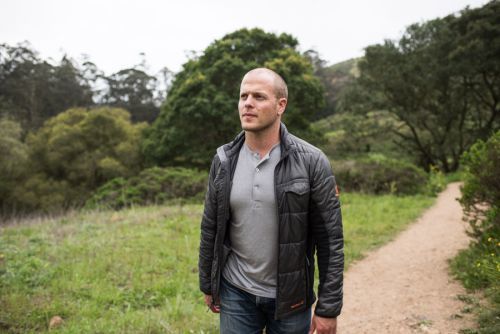
“Prove your words by your deeds.” – Seneca the Younger
My job is usually to deconstruct world-class performers and tease out their routines and habits you can use.
But in this in-betweenisode, I’m going to present some short nuggets of practical, tactical philosophy about practicing what you preach.
This is a letter from Stoic heavyweight Seneca the Younger — who lived a mere 2,000 years or so ago — to his friend Lucilius. It’s from a collection of letters that comprise, effectively, my favorite book of all time. I’ve read it dozens of times, and I loved it so much that I turned it into The Tao of Seneca, a three-volume set of audiobooks.
This is a letter you’ve not heard on the podcast before; it’s worth the listen just for the definition of wisdom alone. Then you have some incredible quotes from Epicurus, and it also discusses how you can have riches without riches having you.
Enjoy!
Listen to it on iTunes.
Stream by clicking here.
Download as an MP3 by right-clicking here and choosing “save as.”
Want to hear another segment from The Tao of Seneca? — Listen to How to Avoid the Busy Trap. In this episode, I dig deeper into useful philosophy and how we think of riches (stream below or right-click here to download):
This episode is brought to you by Headspace, the world’s most popular meditation app (with more than 4,000,000 users). It’s used in more than 150 countries, and many of my closest friends swear by it. Try Headspace’s free Take10 program, 10 minutes of guided meditation a day for 10 days. It’s like a warm bath for your mind. Meditation doesn’t need to be complicated or expensive, and it’s had a huge impact on my life. Try Headspace for free for a few days and see what I mean.
This podcast is also brought to you by 99Designs, the world’s largest marketplace of graphic designers. I have used them for years to create some amazing designs. When your business needs a logo, website design, business card, or anything you can imagine, check out 99Designs.
I used them to rapid prototype the cover for The 4-Hour Body, and I’ve also had them help with display advertising and illustrations. If you want a more personalized approach, I recommend their 1-on-1 service. You get original designs from designers around the world. The best part? You provide your feedback, and then you end up with a product that you’re happy with or your money back. Click this link and get a free $99 upgrade. Give it a test run.
QUESTION(S) OF THE DAY: What was your favorite quote or lesson from this episode? Please let me know in the comments.
Scroll below for links and show notes…
Selected Links from the Episode
The Tao of Seneca: Practical Letters from a Stoic Master
The Moral Letters to Lucilius
Show Notes
Letter 20: On Practicing What You Preach [04:11]
Prove your words by your deeds. [04:32]
Philosophy teaches us to act, not to speak. [05:04]
The highest duty and the highest proof of wisdom. [05:21]
The philosopher may not always be able to keep the same pace, but he can always travel the same path. [05:46]
Are your words and deeds in accord? Here are ways to tell (and why it matters). [05:54]
What is wisdom? [06:56]
What can be learned by the bounty of poverty? [07:44]
It means much not to be spoiled by intimacy with riches. [09:29]
The mark of a noble spirit. [10:35]
The merits of practicing poverty. [11:01]
People Mentioned
Seneca the Younger
Lucilius Junior
Epicurus
Demetrius the Cynic

September 7, 2016
Shep Gordon – The King Maker on His Best PR Stunts, Hugest Failures, and Practical Philosophies
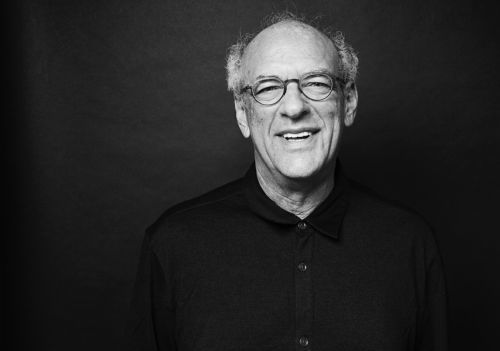
“My philosophy was that you didn’t have to wait for history; you could create history.” – Shep Gordon
Shep Gordon (@SupermenschShep) has been named one of the “100 most influential people” by Rolling Stone magazine. He is the man behind some of the biggest names you’ve ever heard.
If you like the storytelling and lessons of Cal Fussman, you’re going to love this one.
Shep has worked with, and befriended, some of the biggest names in the entertainment industry, from Alice Cooper to Bette Davis, Raquel Welch to Groucho Marx, Blondie to Jimi Hendrix, Sylvester Stallone to Salvador Dali, Luther Vandross to Teddy Pendergrass. He is also credited with inventing the “celebrity chef” phenomenon, which revolutionized the food industry and turned the culinary arts into the multi-billion dollar industry it is today. He has worked with Nobu Matsuhisa, Emeril Lagasse, Wolfgang Puck, Roger Vergé (and many others, including his holiness, the Dalai Lama.)
In this episode, we discuss how he made clients famous, and some of his biggest PR stunts (and flops).
Anthony Bourdain, who is a huge fan of Shep’s, released a memoir detailing Shep’s life and adventures, titled They Call Me Supermensch: A Backstage Pass to The Amazing Worlds Of Film, Food, and Rock ‘N’ Roll.
I’ve been reading it, and it’s fantastic. Imagine it like Animal House meets Harvard MBA.
If you only have 5 minutes, listen to Shep’s thoughts on the dangers of fame, and who is most vulnerable.
Enjoy!
Listen to it on iTunes.
Stream by clicking here.
Download as an MP3 by right-clicking here and choosing “save as.”
Want to hear another episode with a brilliant storyteller? — Listen to this episode with Cal Fussman. In it, we discuss Cal’s interviews with the most influential people in history, how he made himself a guinea pig (Cal boxed against world champion Julio Cesar Chavez), and his best life lessons (stream below or right-click here to download):
This podcast is brought to you by MeUndies. Have you ever wanted to be as powerful as a mullet-wearing ninja from the ’80s, or as sleek as a black panther in the Amazon? Of course you have, and that is where MeUndies comes in. I’ve spent the last six months wearing underwear from these guys 24/7, and they are the most comfortable and colorful underwear I’ve ever owned. Their materials are 2x softer than cotton, as evaluated using the Kawabata method. Check out MeUndies.com/Tim to see my current faves (some are awesomely ridiculous, like the camo).
This podcast is also brought to you by Audible. I have used Audible for years, and I love audiobooks. I have two to recommend:
The Graveyard Book by Neil Gaiman
Vagabonding by Rolf Potts
All you need to do to get your free 30-day Audible trial is go to Audible.com/Tim. Choose one of the above books, or choose any of the endless options they offer. That could be a book, a newspaper, a magazine, or even a class. It’s that easy. Go to Audible.com/Tim and get started today. Enjoy.
QUESTION(S) OF THE DAY: What was your favorite quote or lesson from this episode? Please let me know in the comments.
Scroll below for links and show notes…
Selected Links from the Episode
Connect with Shep Gordon:
They Call Me Supermensch: A Backstage Pass to The Amazing Worlds Of Film, Food, and Rock ‘N’ Roll by Shep Gordon
Supermensch: The Legend of Shep Gordon (a film by Mike Meyers)
Keawakapu Beach on Maui
Janis Joplin’s Hotel Room via Atlas Obscura
Alice Cooper: ‘Rock music was looking for a villain’ by Simon Reynolds, The Guardian
Ladies and gentlemen, you’ve seen him electrocuted, you’ve seen him hung, and now you’re about to see him fired from a cannon. Yes, ladies and gentlemen, Alice Cooper! by Roy Hollingworth, Melody Maker
Teddy Pendergrass gives ladies only concerts by Peter J. Boyer, Associated Press
L.A. Son: My Life, My City, My Food by Roy Choi
Anne Murray performing Snowbird on television in 1973
Inside John Lennon, Keith Moon and Alice Cooper’s Legendary Hollywood Drinking Club by Barry Nicolson, NME (featuring the famous Anne Murray photo)
Commander’s Palace Restaurant, New Orleans
Emeril’s, New Orleans
Sonos Connect Wireless Receiver
Teddy Pendergrass Radio on Pandora
Books by Joseph Campbell
Books by the Dalai Lama
Even This I Get to Experience by Norman Lear
Life by Keith Richards and James Fox
something to food about: Exploring Creativity with Innovative Chefs by Questlove and Ben Greenman
The Culinary Institute of America (CIA) (not to be confused with The Central Intelligence Agency)
LocoL Revolutionary Fast Food
Yak Butter Tea Is a Traditional Tibetan Drink With a Practical Purpose by Clarissa Wei, Eater
Show Notes
How did Shep Gordon end up in Hawaii? [06:14]
How Shep Gordon went from being a probation officer to a manager in the music industry. [07:51]
Shep recalls some of his favorite stunts and what it sometimes takes to capture an audience. [10:44]
When you’re the face of rebellion like Alice Cooper, there’s no such thing as bad press if it gets parents to hate everything about you. [21:10]
Shep on the role of a good manager in the entertainment industry. [23:02]
Shep on how he beat the competition to manage Teddy Pendergrass. [25:56]
Selling Teddy Pendergrass as The Black Elvis. [30:33]
Rookie management mistake: putting greed before service. [33:47]
How Shep has maintained his life-long orientation toward service. [36:25]
Why did it take nearly a decade for Shep to agree to let Mike Meyers make a documentary about him? [39:07]
How initial embarrassment over attention from the documentary gave way to an opportunity to connect with and inspire others. [43:16]
Roy Choi and Anthony Bourdain talk Shep into writing a book. [45:12]
What you should take away from Shep’s book. [46:04]
How did Shep prepare girl-next-door Anne Murray for stardom with the help of some Hollywood Vampires? [47:48]
On meeting Emeril Lagasse and helping create the celebrity chef phenomenon. [51:08]
Shep’s practice for appreciating life’s miracles. [54:06]
What separates those who get consumed by fame and those who are able to thrive with it? [56:08]
Books Shep has gifted most often to others. [1:03:52]
What would Shep’s billboard say? [1:05:54]
Inspirational quotes. [1:06:41]
Best or most worthwhile investment of money, time, or energy. [1:07:20]
Shep’s advice to new parents. [1:10:03]
Shep’s most significant life lessons. [1:12:02]
On the rhythms of nature. [1:18:12]
Should you try Tibetan yak butter tea? [1:18:47]
People Mentioned
Colonel Tom Parker
Elvis Presley
Janis Joplin
Jimi Hendrix
Jim Morrison
Lester Chambers
Alice Cooper
P.T. Barnum
Derek Taylor
Rick Rubin
Teddy Pendergrass
Groucho Marx
Goddard Lieberson
Sid Seidenberg
B.B. King
Luther Vandross
Lily Meola
Roger Vergé
Mike Myers
Roy Choi
Anthony Bourdain
Anne Murray
John Lennon
Harry Nilsson
Micky Dolenz
Yoko Ono
Emeril Lagasse
Wolfgang Puck
Nobu Matsuhisa
Paul Prudhomme
Joseph Campbell
Michael Douglas
Johnny Appleseed
Amelia Boone
Seth Godin
Daniel Boulud
David Bouley
Alain Ducasse
Hubert Keller
The Dalai Lama
Sylvester Stallone
Jack Nicholson
Danny DeVito
Anthony Quinn
Alex Rodriguez (AROD)
Derek Jeter
Steve Jang
Daniel Patterson
Jamie Oliver
Jon Favreau

September 6, 2016
My Favorite “Smart Drugs”
I’m often asked which “smart drugs” I use to improve mental performance and productivity.
I’ve tried everything imaginable, whether over-the-counter, prescription, or otherwise. For 90% of the options, the short-term benefits are not worth the long-term side-effects.
This video describes a few options that I’ve found to be sustainable and reliably effective. Note that I will still “cycle” off of these at least one week out of every eight weeks.
Enjoy!

August 31, 2016
Cal Fussman – The Master Storyteller Returns
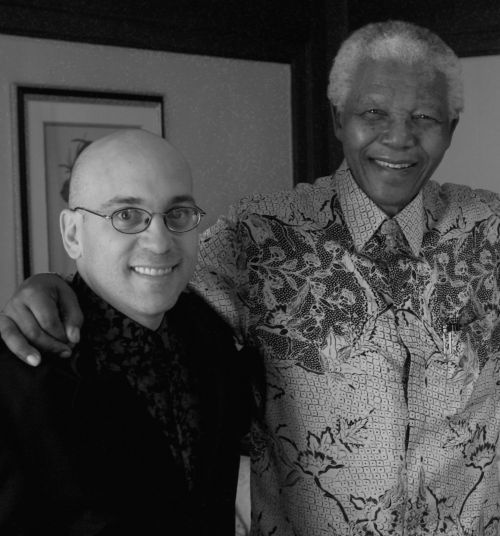
Cal (@calfussman) is a New York Times bestselling author and a writer-at-large for Esquire magazine, where he is best known for being a primary writer of the “What I Learned” feature.
The Austin Chronicle has described Cal’s interviewing skills as “peerless.”
He has transformed oral history into an art form, conducting probing interviews with the icons who’ve shaped the last 50 years of world history: Mikhail Gorbachev, Jimmy Carter, Ted Kennedy, Jeff Bezos, Richard Branson, Jack Welch, Robert DeNiro, Clint Eastwood, Al Pacino, George Clooney, Leonardo DiCaprio, Tom Hanks, Bruce Springsteen, Dr. Dre, Quincy Jones, Woody Allen, Barbara Walters, Pelé, Yao Ming, Serena Williams, John Wooden, Muhammad Ali, and countless others.
When I asked listeners for questions to present to Cal during this return appearance, about 70 percent of you replied with some version of: “He is my favorite storyteller of all time. Please just let him talk for another four hours!”
I hope you enjoy this as much as I did. I never get tired of talking to Cal. He’s such an incredible storyteller.
If you only have 5 minutes, you’ll want to hear Cal’s favorite interview questions that usually get a great response.
Enjoy!
Listen to it on iTunes.
Stream by clicking here.
Download as an MP3 by right-clicking here and choosing “save as.”
Want to hear my first episode with Cal Fussman? — In this episode, we discuss Cal’s interviews with the most influential people in history, how he made himself a guinea pig (Cal boxed against world champion Julio Cesar Chavez), and his best life lessons (stream below or right-click here to download):
This podcast is brought to you by Four Sigmatic. I reached out to these Finnish entrepreneurs after a very talented acrobat introduced me to one of their products, which blew my mind (in the best way possible). It is mushroom coffee featuring chaga. It tastes like coffee, but there are only 40 milligrams of caffeine, so it has less than half of what you would find in a regular cup of coffee. I do not get any jitters, acid reflux, or any type of stomach burn. It put me on fire for an entire day, and I only had half of the packet.
People are always asking me what I use for cognitive enhancement — right now, this is the answer. You can try it right now by going to foursigmatic.com/tim and using the code “Tim” to get 20 percent off your first order. If you are in the experimental mindset, I do not think you’ll be disappointed.
This podcast is also brought to you by Wealthfront. Wealthfront is a massively disruptive (in a good way) set-it-and-forget-it investing service led by technologists from places like Apple. It has exploded in popularity in the last two years and now has more than $2.5B under management. Why? Because you can get services previously limited to the ultra-wealthy and only pay pennies on the dollar for them, and it’s all through smarter software instead of retail locations and bloated sales teams.
Check out wealthfront.com/tim, take their risk assessment quiz, which only takes 2-5 minutes, and they’ll show you — for free — exactly the portfolio they’d put you in. If you want to just take their advice and do it yourself, you can. Well worth a few minutes to explore: wealthfront.com/tim.
QUESTION(S) OF THE DAY: What was your favorite quote or lesson from this episode? Please let me know in the comments.
Scroll below for links and show notes…
Selected Links from the Episode
Connect with Cal Fussman:
Twitter | Website | Kevin “The Manager”
The Interview Master: Cal Fussman and the Power of Listening (Cal’s last appearance on this show)
The Piano Has Been Drinking [Not Me] by Tom Waits
Did Muhammad Ali Throw His Olympic Gold Medal into the Ohio River? Sports Detectives, Smithsonian Channel
“Just Take Me to Jail:” Remembering Muhammad Ali’s Refusal to Fight in Vietnam by Democracy Now! (video)
Social Confrontation: The Battle of Michigan Ave — 1968 Chicago Democratic Convention footage via Chicago Film Archives (video)
The Rumble in the Jungle (George Foreman vs. Muhammad Ali, 1974)
Muhammad Ali’s Astounding Bursts of Physical Brilliance by Cal Fussman, Esquire
What is Parkinson’s Disease? Parkinson’s Disease Foundation
Muhammad Ali vs. Joe Frazier: A brutal trilogy by Greg Logan, Newsday
Chimpanzee Politics: Power and Sex among Apes by Frans de Waal
Muhammad Ali: Robert Lipsyte on the Life of the Greatest, Time
Drinking at 1,300 Ft: A 9/11 Story About Wine and Wisdom by Cal Fussman, Esquire
Wynn’s Bartolotta Becomes Costa Di Mare by Andy Wang, Las Vegas Weekly
Barrel saunas
A Distasteful Encounter with William F. Buckley Jr. by Gore Vidal, Esquire
300 Things We Didn’t Know About Gerard Butler by Cal Fussman
The 75 Movies Every Man Should See, Esquire
Inside the Actors Studio
What I’m like when I drink Yogi Soothing Caramel Bedtime Tea
Show Notes
Cal Fussman prescribes Tom Waits for Molly. [08:16]
To Cal, Muhammad Ali’s death was “like having your childhood end when you’re in your fifties.” [08:55]
Cal talks about what made Ali unique — especially in the context of the ’60s. [10:04]
Cal talks about getting to know Ali. [17:29]
Ali was a hero for heroes. [21:34]
Contrasting Ali’s childhood training regimen with that of rival Joe Frazier. [26:38]
The teamwork of Ali and cornerman Drew Bundini Brown. [31:07]
The best time for an interviewer to ask the toughest questions. [32:41]
Muhammad Ali vs. Cal Fussman [32:50]
Is there a Muhammad Ali for millennials? [40:47]
What kind of ice cream did Ali share with Cal? [47:54]
When you’re writing an obituary for your hero and dear friend, too many words still aren’t enough. [48:09]
Ali’s definition of evil. [51:33]
Cal is lucky enough to have breakfast with another one of his heroes almost every morning. [54:33]
Cal tells us about the time his friend saved his life by making a camera under his shirt look like a gun to fake out troublemakers in Brazil. [56:14]
An interesting story from the James Beard Foundation awards. [1:08:12]
Cal’s worst interview — and the aftermath. [1:15:51]
How Cal’s writing style makes it impossible for an interview subject to lie to him. [1:27:04]
How Larry King’s casual, conversational interviewing style differs from Cal’s. [1:27:43]
Cal interviews a guy named “Gerry” for an Esquire cover story. [1:28:28]
How Fidel Castro deals with difficult reporters. [1:39:10]
What I learned from James Lipton’s interviewing style. [1:41:06]
Interviewers Cal greatly admires. [1:42:03]
Interview questions that get consistently good results (and a few that would likely get bad results). [1:46:01]
How a dinner party game, Jackie Gleason, and Frank Sinatra helped Larry King in the beginning of his broadcasting career. [1:51:35]
Developing friendships vs. getting “good tape” from interviews. [1:56:21]
Cal’s “jukebox” style of preparing for an interview. [1:59:04]
Best strategies to get to the heart while interviewing? [2:04:12]
People Mentioned
Molly
Tom Waits
Muhammad Ali
Martin Luther King, Jr.
Robert F. Kennedy
Joe Frazier
George Foreman
Lonnie Ali
Howard Bingham
Nelson Mandela
Rudy Clay (aka Rahman Ali)
Frank Sinatra
Drew Bundini Brown
Julio César Chávez
Bernie Sanders
Cus D’Amato
Mike Tyson
Elon Musk
Robert Lipsyte
Larry King
Ted Allen
Paul Bartolotta
Kevin “The Manager” Hekmat
William F. Buckley, Jr.
Jorge Ramos
Donald Trump
Gerard Butler
Megan Fox
Fidel Castro
James Lipton
Barbara Walters
Charlie Rose
Matt Lauer
Jackie Gleason
Neil Strauss
Oprah Winfrey
Edward Norton
Jon Snow
Jocko Willink
Leonardo DiCaprio
Laird Hamilton
Rick Rubin

August 24, 2016
Jason Nemer – Inside the Magic of AcroYoga
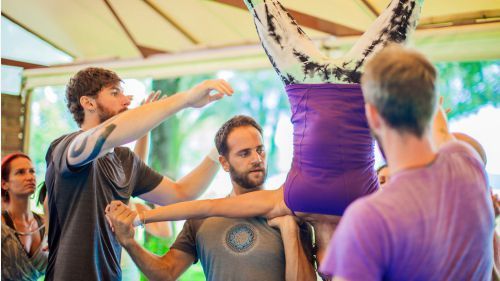
“If I had to prescribe two things to improve health and happiness in the world, it’s movement and play.” – Jason Nemer
My guest on this episode of the podcast is Jason Nemer (@jasonnemer), co-founder of AcroYoga.
Jason is an incredible character, who travels the world with next to nothing. He introduced me to my latest obsession — AcroYoga.
Along with Gymnastic Strength Training, I’ve been doing AcroYoga — and I think about doing it all the time. AcroYoga is closer to partner acrobatics: Cirque du Soleil routine meets sensual-but-not-sexual contact.
Even if you have no interest in doing AcroYoga yourself, there are many takeaways and recommendations in this episode that can benefit your life. And for those of you that are interested, we even do a couple of video demos, which can be found here. But don’t feel like you need to step away from the purely audio experience of this podcast to follow along.
Incidentally, the video was recorded at Creative Live, my favorite place to learn online. I’ve taken hundreds of courses there, but the one I’ll recommend is Six Months to Six Figures by Peter Voogd.
Enjoy the show!
Listen to it on iTunes.
Stream by clicking here.
Download as an MP3 by right-clicking here and choosing “save as.”
Want to hear another podcast on fitness and training from a world-class coach? — Listen to my conversation with Pavel Tsatsouline. In this episode, we discuss the science of strength and the art of physical performance (stream below or right-click here to download):
This podcast is brought to you by Audible. I have used Audible for years, and I love audiobooks. I have two to recommend:
The Graveyard Book by Neil Gaiman
Vagabonding by Rolf Potts
All you need to do to get your free 30-day Audible trial is go to Audible.com/Tim. Choose one of the above books, or choose any of the endless options they offer. That could be a book, a newspaper, a magazine, or even a class. It’s that easy. Go to Audible.com/Tim and get started today. Enjoy.
This podcast is also brought to you by Wealthfront. Wealthfront is a massively disruptive (in a good way) set-it-and-forget-it investing service led by technologists from places like Apple. It has exploded in popularity in the last two years and now has more than $2.5 billion under management. Why? Because you can get services previously limited to the ultra-wealthy and only pay pennies on the dollar for them, and it’s all through smarter software instead of retail locations and bloated sales teams.
Check out wealthfront.com/tim, take their risk assessment quiz, which only takes 2-5 minutes, and they’ll show you for free exactly the portfolio they’d put you in. If you want to just take their advice and do it yourself, you can. Well worth a few minutes to explore: wealthfront.com/tim.
QUESTION(S) OF THE DAY: What was your favorite quote or lesson from this episode? Please let me know in the comments.
Scroll below for links and show notes…
Selected Links from the Episode
Connect with Jason Nemer:
AcroYoga International | YouTube | Instagram | Twitter | Website
Full video of this episode
Classic KONG Dog Toy
Six Months to Six Figures by Peter Voogd at Creative Live
Duck Shit Oolong Tea
AcroYoga
Reverse Bat Position (Instagram documenting my first AcroYoga experience with Jason.)
Sport Acrobatics (aka Acrobatic Gymnastics)
Yoga
Thai Massage
Happy Baby Pose
Hand to Hand Handstand
Folded Leaf, Front Bird, and Throne
Cirque du Soleil
Gymnastic Strength Training
Bizarre: A Circus Story trailer — a film about Lu Yi
Circus Center in San Francisco
Sciatica
Ayurveda
Shadow Yoga
Metta (Loving Kindness)
Bharatanatyam Performance by Savitha Sastry
Tai Chi
Beginner Acro Yoga Class: Bone Stacking and Tightness by Daniel Scott Yoga
Raw or Boiled Egg Experiment by HooplaKidzLab
Athletic Playground in Emeryville
Are Psychedelic Drugs the Next Medical Breakthrough?
Hitachi Magic Wand “Massager”
Master Chart of 908 Postures by Sri Yogi Dharma Mittra
Marcelo Garcia Academy for Jiu-Jitsu
Does partnering with Kiplinn Sagmiller make AcroYoga too easy?
Making a Dream Machine by Michael Traynor at GymnasticBodies
Ravel – Bolero by London Symphony Orchestra (Kyril Kondraschin)
10 with Dudley Moore and Bo Derek
Caveman with Ringo Starr
Unified Field Theory
Searching for Bobby Fischer
The Art of Learning Project
The 4-Hour Chef
Hatha Yoga
The Princess Bride
Surely You’re Joking, Mr. Feynman! (Adventures of a Curious Character) by Richard P. Feynman and Ralph Leighton
The Prophet by Kahlil Gibran
Tao Te Ching by Lao Tzu
AY.LAB with Julia & Pascal Weis
Wild Sports in Sacramento (for all your gun, bait, and throwing knife needs)
Frisbee Golf (aka Disc Golf)
Roc Discs
Thunderbird Distance Driver Golf Discs
The concept of Svaha
Show Notes
What are we drinking? [06:52]
How Jason and I met, and my first exposure to AcroYoga. [07:30]
The origins of AcroYoga (and some of its benefits I’ve enjoyed so far). [09:34]
The categories of sport acrobatics. [13:43]
The dark side of competitive acrobatics. [17:01]
The surrender component. [18:41]
Beginner AcroYoga basics. [21:26]
Freakish hip mobility in action. [29:28]
Alleviating lower back pain. [30:36]
Why you don’t see a lot of 100-year-old gymnasts. [31:39]
Jason talks about people who have trained and inspired him. [32:16]
The meeting of two masters. [34:11]
What is the handstand approach? [38:44]
The cross-pollination of different physical disciplines. [40:34]
What is Shadow Yoga? [41:55]
Bone stacking and handstand ATB: Alignment, Tightness, and Balance. [45:29]
How Japanese gymnasts dominated the ’70s. [50:00]
ATB demonstration. [52:03]
Some of the most common AcroYoga mistakes. [56:11]
Other teachers and mentors who have had an impact on Jason. [59:35]
Things about the modern yoga world that drive Jason crazy. [1:03:45]
Acrobatic flying demonstration. [1:08:42]
The challenges of connecting through microangles. [1:12:42]
About handstand rigs, dream machines, and power levers. [1:14:38]
Jason tells us how Maurice Ravel’s Bolero and the life of Albert Einstein inspire his attempts to arrive at a Unified Field Theory of AcroYoga. [1:20:33]
The drawbacks of competitive athletics vs. the benefits of recreational athletics. [1:23:10]
One of Jason’s definitions of an advanced practitioner. [1:27:27]
How the meta learning section of The 4-Hour Chef can help you develop skills to transfer to other skills. [1:28:22]
How participating in every role leads to understanding and compassion in AcroYoga. [1:29:38]
The benefits of combining acrobatic flying with therapeutic flying. [1:31:03]
How Hatha Yoga aims for a 50/50 balance between feminine and masculine energy. [1:32:13]
The Princess Bride method turns out to be inconceivable. [1:33:21]
Who Jason thinks of when hearing the word “successful.” [1:35:06]
Books Jason has gifted most. [1:37:34]
Jason is constantly traveling. What does he bring with him? [1:39:00]
That time Jason smuggled throwing knives into Bali. [1:41:40]
Is frisbee golf a real sport? [1:42:12]
Purchase of $100 or less that has had the biggest positive impact on Jason’s life. [1:44:03]
How Jason practices the philosophy of Svaha. [1:44:16]
What does Jason believe that other people think is insane? [1:45:17]
Why Jason calls losing everything he owned (including the van where he was living) “really amazing.” [1:46:45]
Jason tells a story I’ve never heard before. [1:48:03]
What Jason’s billboard would say. [1:50:20]
People Mentioned
Molly
Peter Voogd
Travis Brewer
Jenny Sauer-Klein
Andrii Bondarenko
Jerzy Gregorek
Coach Christopher Sommer
Master Lu Yi
Scott Blossom
Ra’s al Ghul
Batman
Zhander Remete
B.K.S. Iyengar
Tirumalai Krishnamacharya
Kesuke Miyagi
Sam Luckey
Dharma Mittra
Yogi Gupta
Marcelo Garcia
Sebastian Junger
Kiplinn Sagmiller
Maurice Ravel
Dudley Moore
Bo Derek
Albert Einstein
Josh Waitzkin
Justin Bench
Daniel Scott
Kelly Starrett
Mahatma Gandhi
Richard P. Feynman
Julia Weis
Pascal Weis

August 22, 2016
How to ‘Waste Money’ To Improve the Quality of Your Life
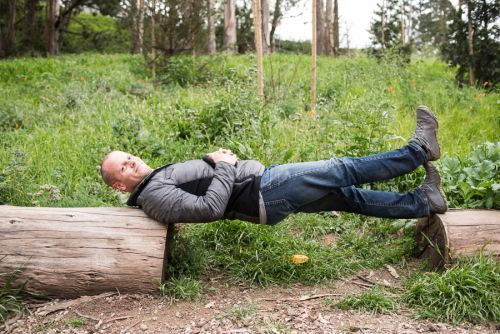
This episode is not going to deconstruct a world-class performer, per usual. This is a short, but very actionable and practical episode about the inner workings of my business.
I was asked recently how I choose my projects. I’ve riffed on this topic, and shared many thoughts on delegating tasks, future projects, and my current approach to start-ups.
I realized that the real question at the root of many of my decisions is: “How can I waste money to improve my quality of life?” This seems like a bad thing, but it is not. It is trading pennies for dollars.
I delve into this topic and much more. Please enjoy!
Listen to it on iTunes.
Stream by clicking here.
Download as an MP3 by right-clicking here and choosing “save as.”
Want to hear another podcast packed full of actionable tips that I use in my own life? — Listen to this short episode on the magic of mindfulness. In this episode, I discuss how to complain less, appreciate more, and live a better life (stream below or right-click here to download):
This podcast is brought to you by Wealthfront. Wealthfront is a massively disruptive (in a good way) set-it-and-forget-it investing service led by technologists from places like Apple. It has exploded in popularity in the last two years and now has more than $2.5B under management. Why? Because you can get services previously limited to the ultra-wealthy and only pay pennies on the dollar for them, and it’s all through smarter software instead of retail locations and bloated sales teams.
Check out wealthfront.com/tim, take their risk assessment quiz, which only takes 2-5 minutes, and they’ll show you — for free — exactly the portfolio they’d put you in. If you want to just take their advice and do it yourself, you can. Well worth a few minutes to explore: wealthfront.com/tim.
This podcast is also brought to you by Four Sigmatic. I reached out to these Finnish entrepreneurs after a very talented acrobat introduced me to one of their products, which blew my mind (in the best way possible). It is mushroom coffee featuring chaga. It tastes like coffee, but there are only 40 milligrams of caffeine, so it has less than half of what you would find in a regular cup of coffee. I do not get any jitters, acid reflux, or any type of stomach burn. It put me on fire for an entire day, and I only had half of the packet.
People are always asking me what I use for cognitive enhancement — right now, this is the answer. You can try it right now by going to foursigmatic.com/tim and using the code “Tim” to get 20 percent off your first order. If you are in the experimental mindset, I do not think you’ll be disappointed.
QUESTION(S) OF THE DAY: What was your favorite quote or lesson from this episode? Please let me know in the comments.
Scroll below for links and show notes…
Selected Links from the Episode
The Mythical Man-Month: Essays on Software Engineering by Frederick P. Brooks, Jr.
Maker’s Schedule, Manager’s Schedule by Paul Graham
The Effective Executive: The Definitive Guide to Getting the Right Things Done by Peter F. Drucker
The 4-Hour Workweek: Escape 9-5, Live Anywhere, and Join the New Rich by Timothy Ferriss
Maslow’s Hierarchy of Needs
Show Notes
How do I determine what to delegate versus what to do on my own? [06:02]
How do I know what is the most important task on my to-do list? [09:46]
Why I focus more on writing than investing. [11:02]
Time is a valuable — but also variable — currency. Can you afford distractions? [13:06]
Are you letting unnecessary tasks overwhelm you? Pare down and eliminate. [16:26]
I share the story about a time I wish I’d “wasted” $2,000. [17:09]
You can always make more money. You can’t create more time. [19:31]
The journaling exercise I use to dream up ways to “waste” income in order to improve my quality of life. [20:12]
People Mentioned
Bill Gates
Frederick P. Brooks, Jr.
Paul Graham
Peter F. Drucker
Abraham Maslow






